Support strong Canadian climate journalism for 2025
On Sept. 30, Parliament Hill was painted orange as more than a thousand people gathered for the first National Day for Truth and Reconciliation.
Earlier this year, Sept. 30 was declared a federal statutory holiday, coinciding with Orange Shirt Day, which honours the story of Phyllis Webstad, a young girl whose new orange shirt was stripped from her on her first day at St. Joseph’s Residential School in 1973. On Sept. 30, 2013, Webstad spoke publicly about her experience and Orange Shirt Day was born.
The federal statutory holiday was established after ground-penetrating radar uncovered the remains of 215 children at the former Kamloops Indian Residential School, confirming what Indigenous people have known for decades.
Manitoba, Nova Scotia and Prince Edward Island were the only provinces to make the National Day for Truth and Reconciliation a provincial holiday.
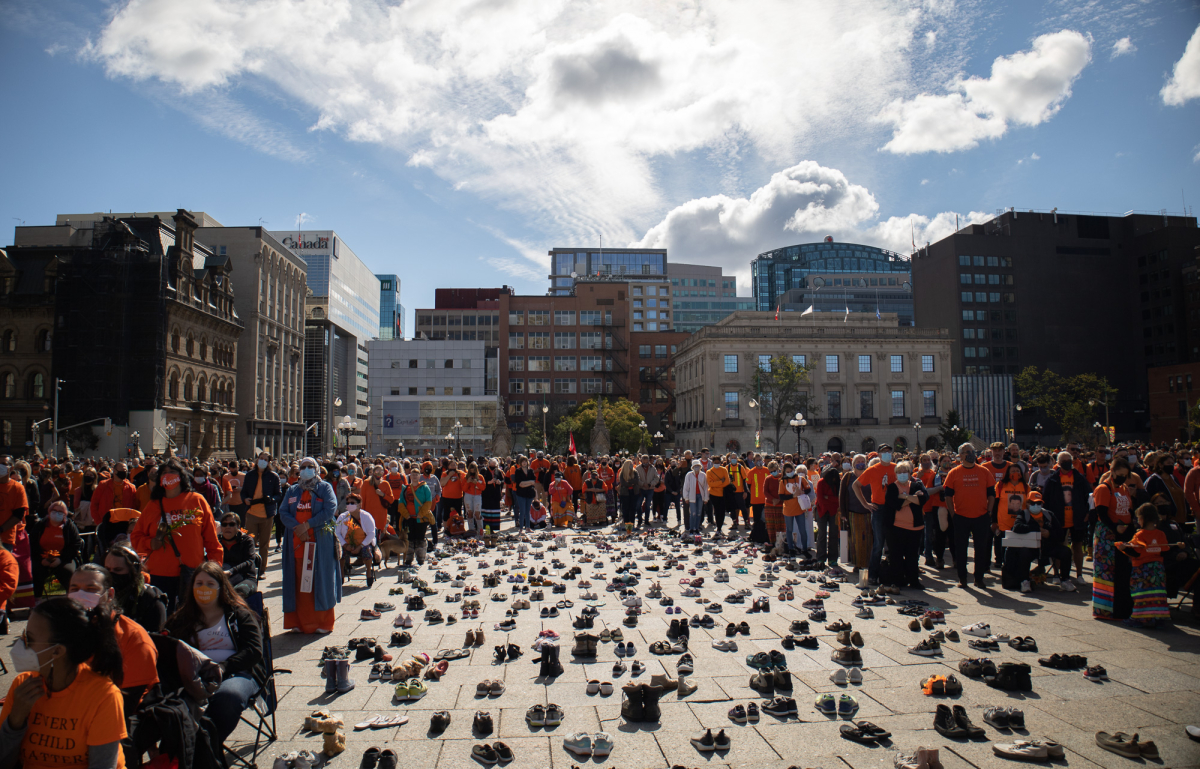
At an event organized by Pass the Feather Indigenous Arts Collective of Canada, survivors of residential schools were honoured with the gift of eagle feathers.

Some came to support their family, like Heather George, 36, and her four-year-old-daughter Maxine. During the two-hour ceremony, George’s uncle, Doug George-Kaneentiio, an Akwesasne Mohawk Residential School Survivor, made a speech about his experiences.
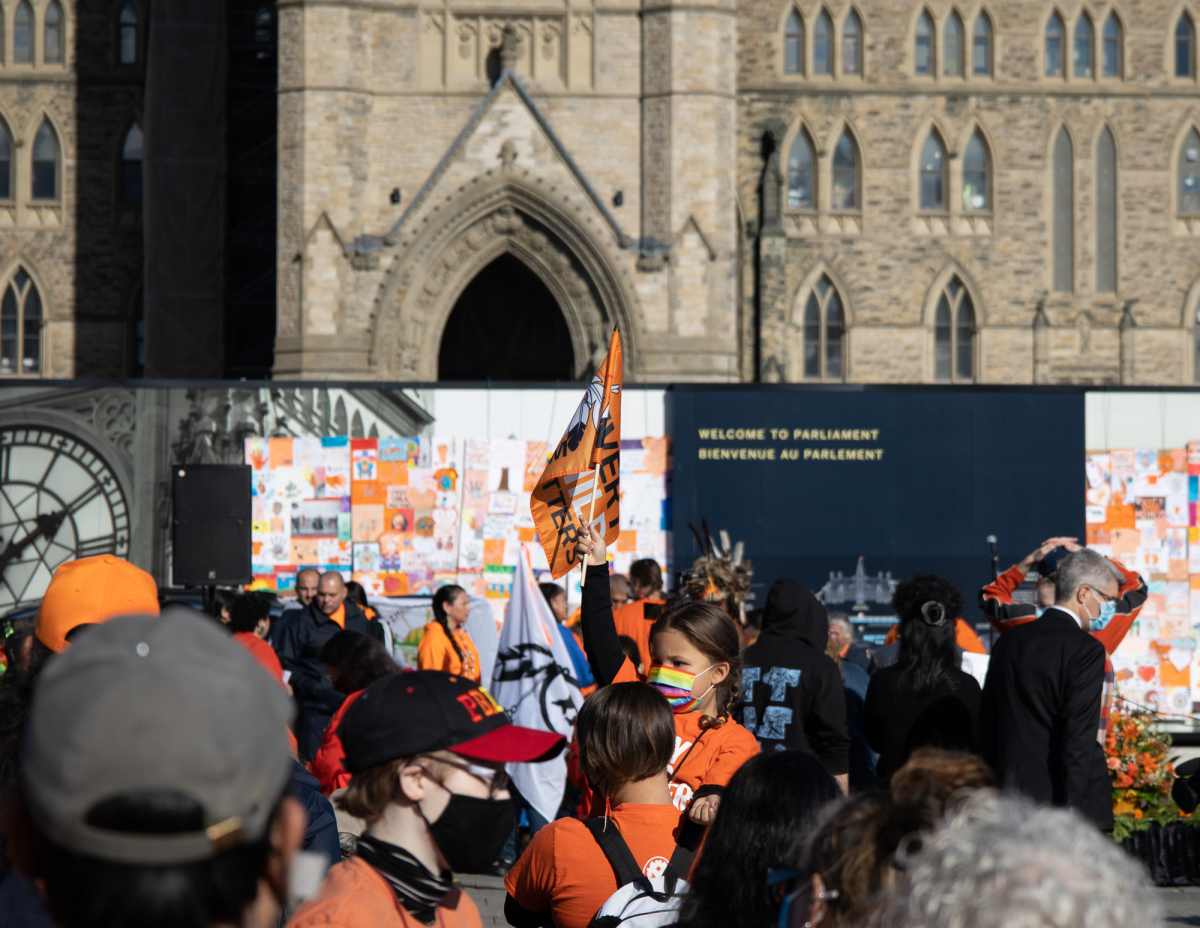
James Eagle, or Sit Alone Bear, is a survivor of the Pine Creek Indian Residential School in Manitoba and served in the Canadian Forces for 25 years.

“We are going to tell the people of Canada what happened at those schools,” he said. “There (are) a lot of non-believers in Canada.”
During the ceremony, speakers honoured residential school survivors and the children who never came home.
“We just want the truth to be told,” Jonel Beauvais, a Wolf Clan woman from Akwesasne, told the crowd. “Because we all know that things that happen in the dark all come to light.”

Her powerful words moved attendees to clap, cheer and cry.

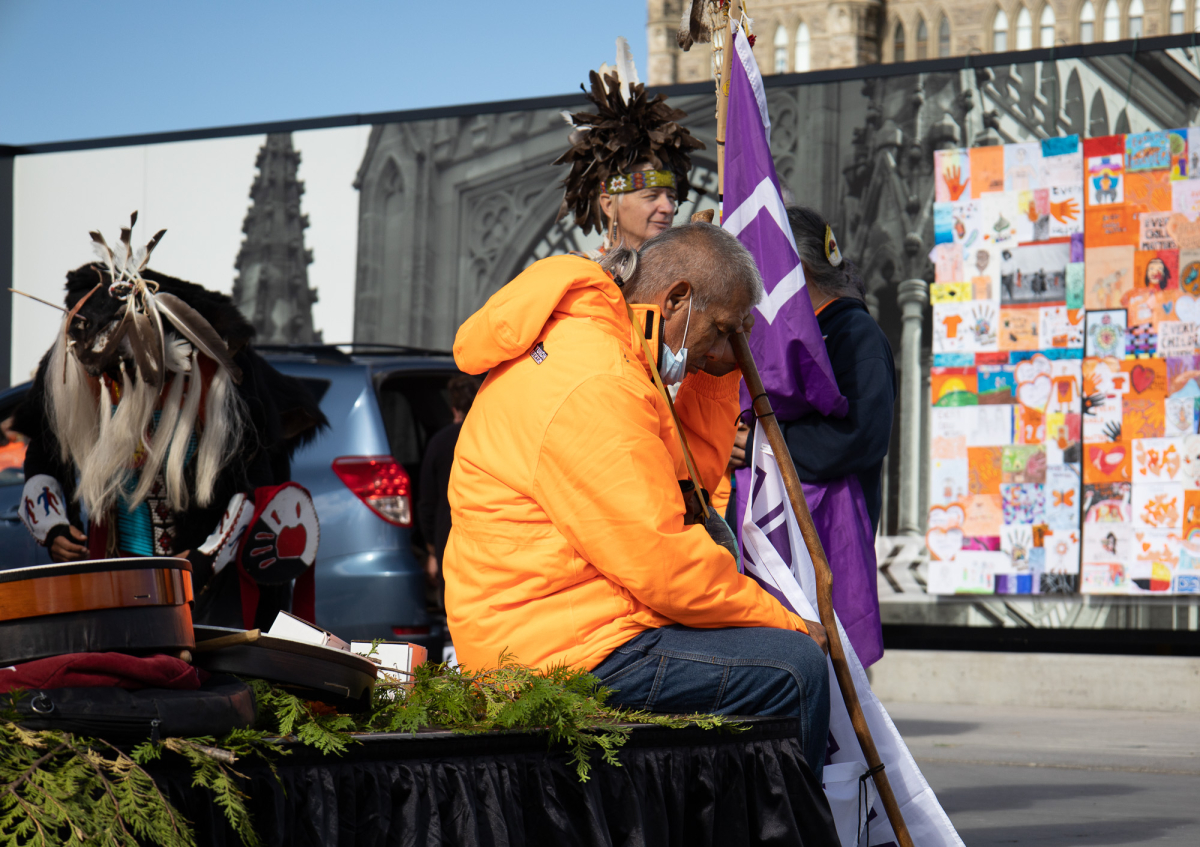
Several moving performances by Theresa Bear Fox and the Akwesasne Women’s Singers expressed the pain of losing one’s child and honoured the children who never came home.
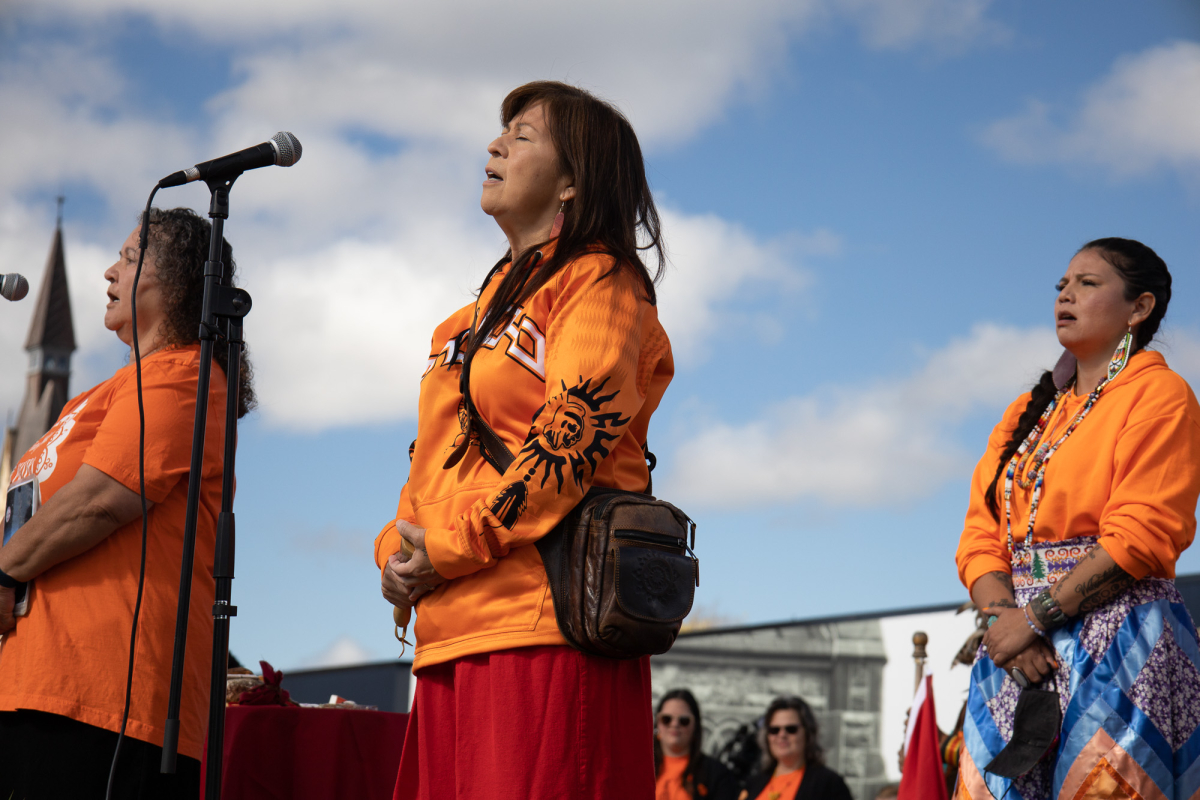
A group of drummers held a “decolonized moment of silence,” symbolizing the heartbeats of all the children who were killed in residential schools with one minute of drumming.
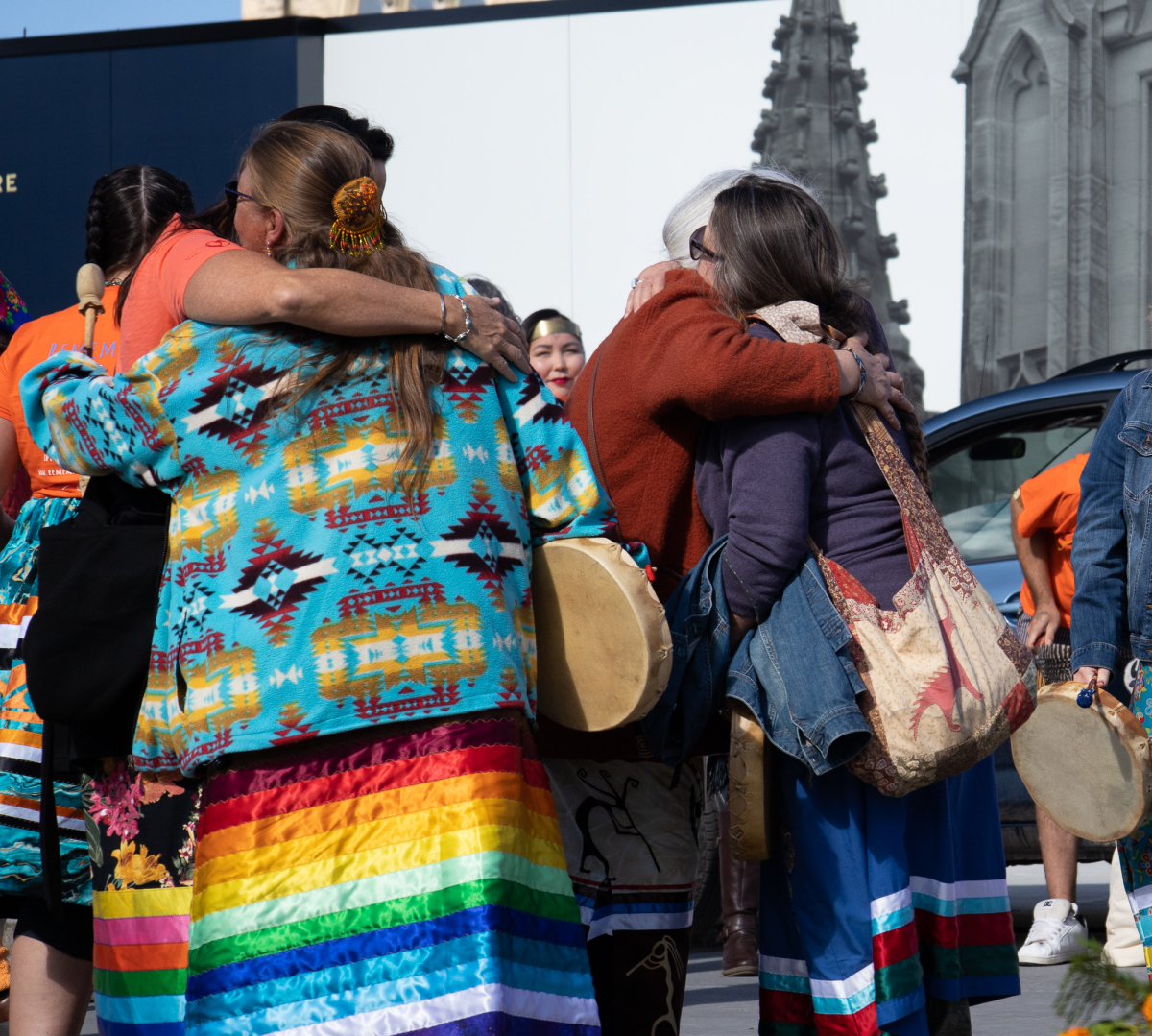
Attendees were asked to ensure they did not block the view of survivors during the ceremony and many stood rather than occupy any vacant seats intended for survivors.

After the ceremonies, the survivors led a walk to Confederation Park for an afternoon of art, food and performances.
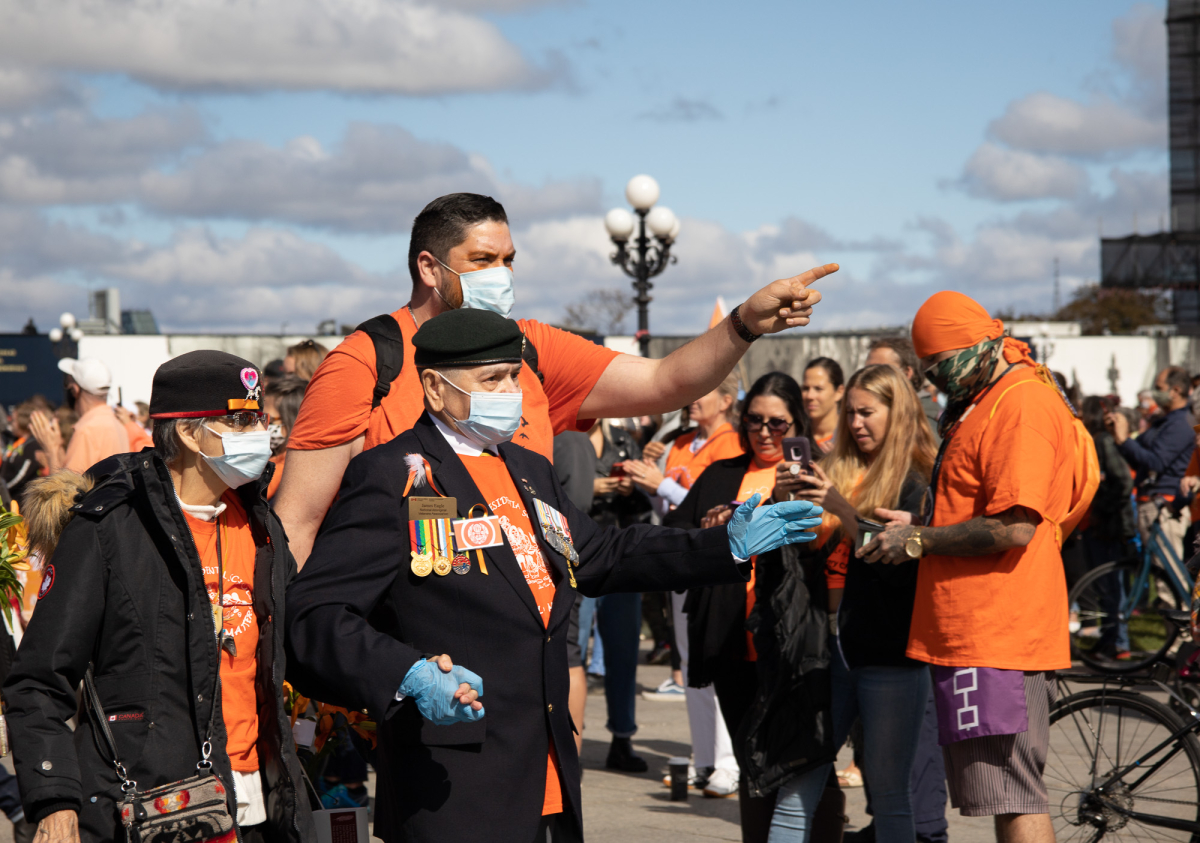


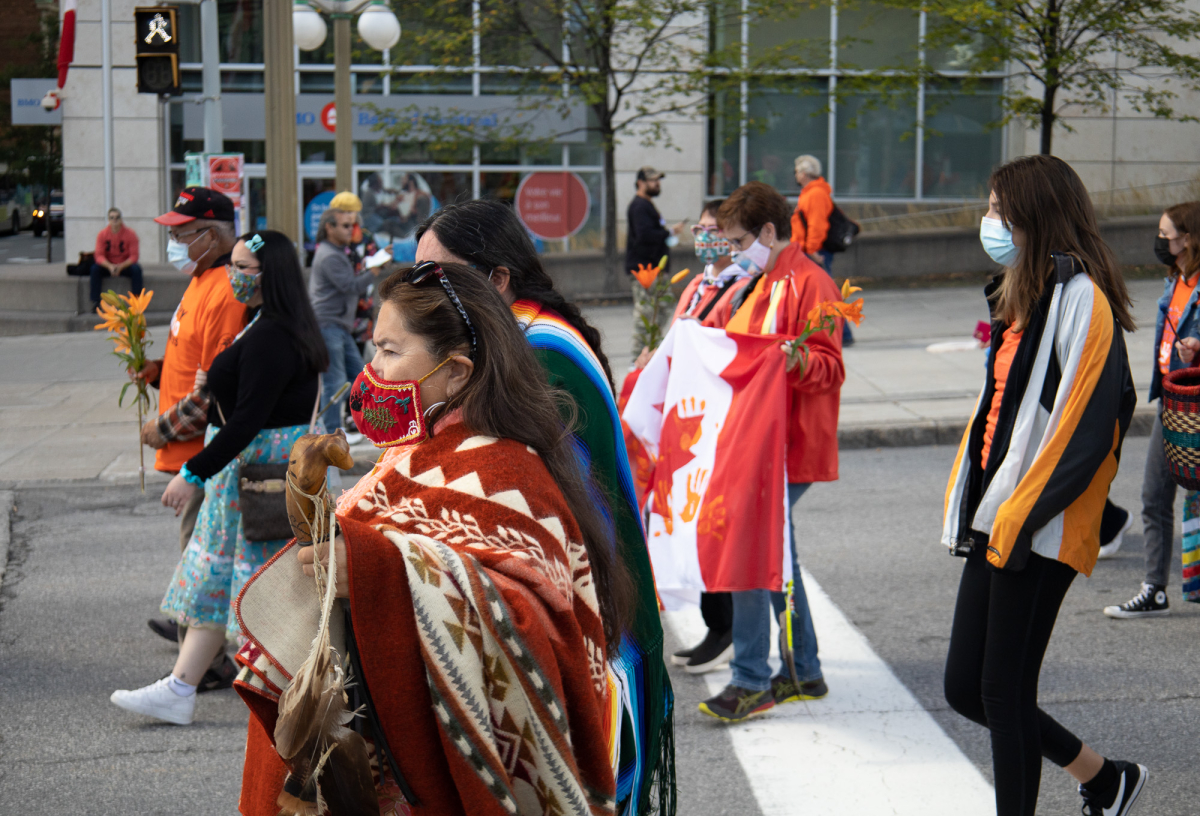
At Confederation Park, survivors were invited to sit around the stage to watch more performances like hoop dancing and singing and tell their stories to the crowd.
At the park entrance, people could add their handprint to an interactive art installation commemorating all the missing and murdered Indigenous women and girls and victims of residential schools.

People lined up to get bison burgers and strawberry drink before settling in to listen to survivors speak about their experiences.
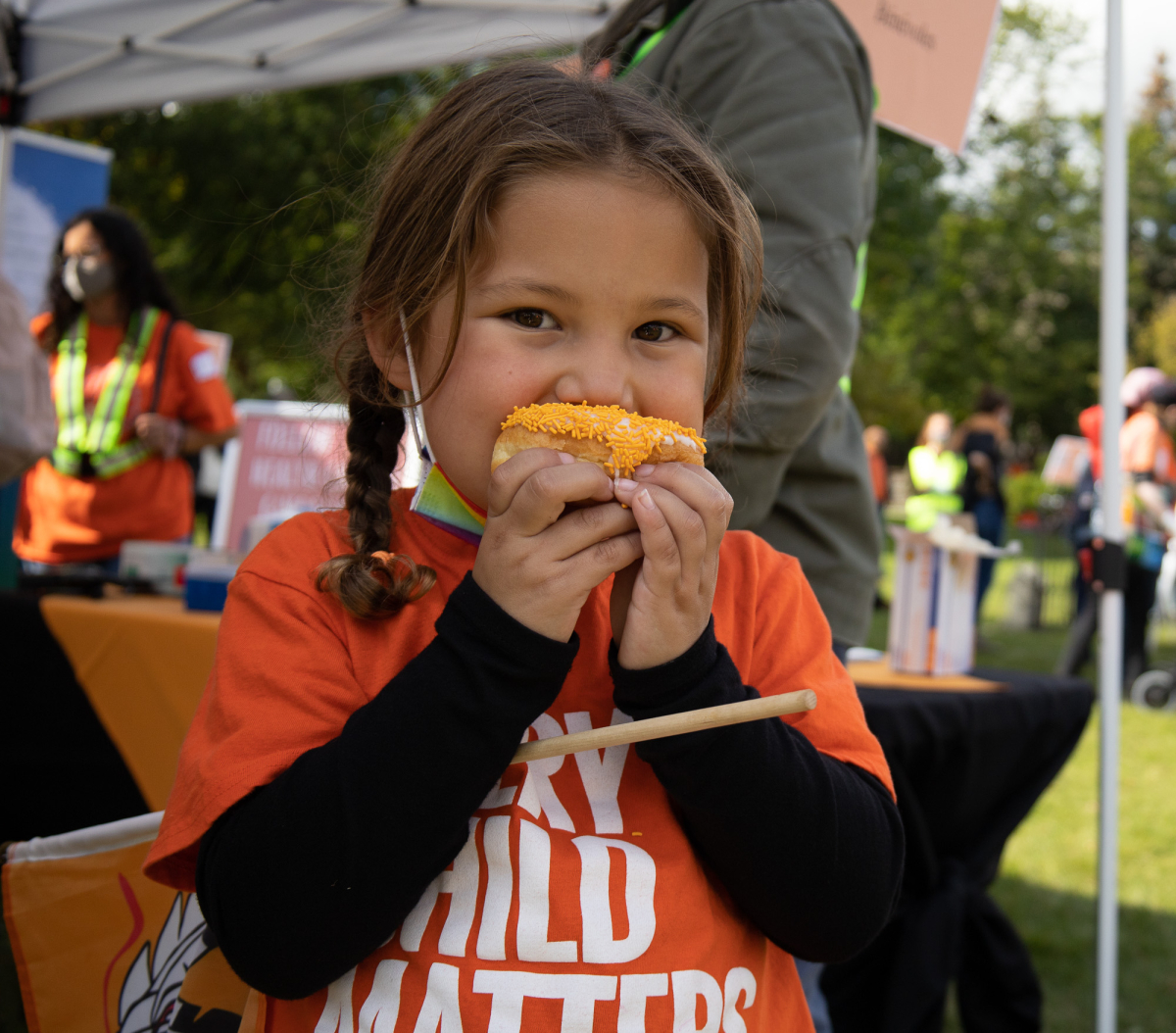
Traditional Indigenous art demonstrations like basketry, beading and metalworking were available for attendees to try.
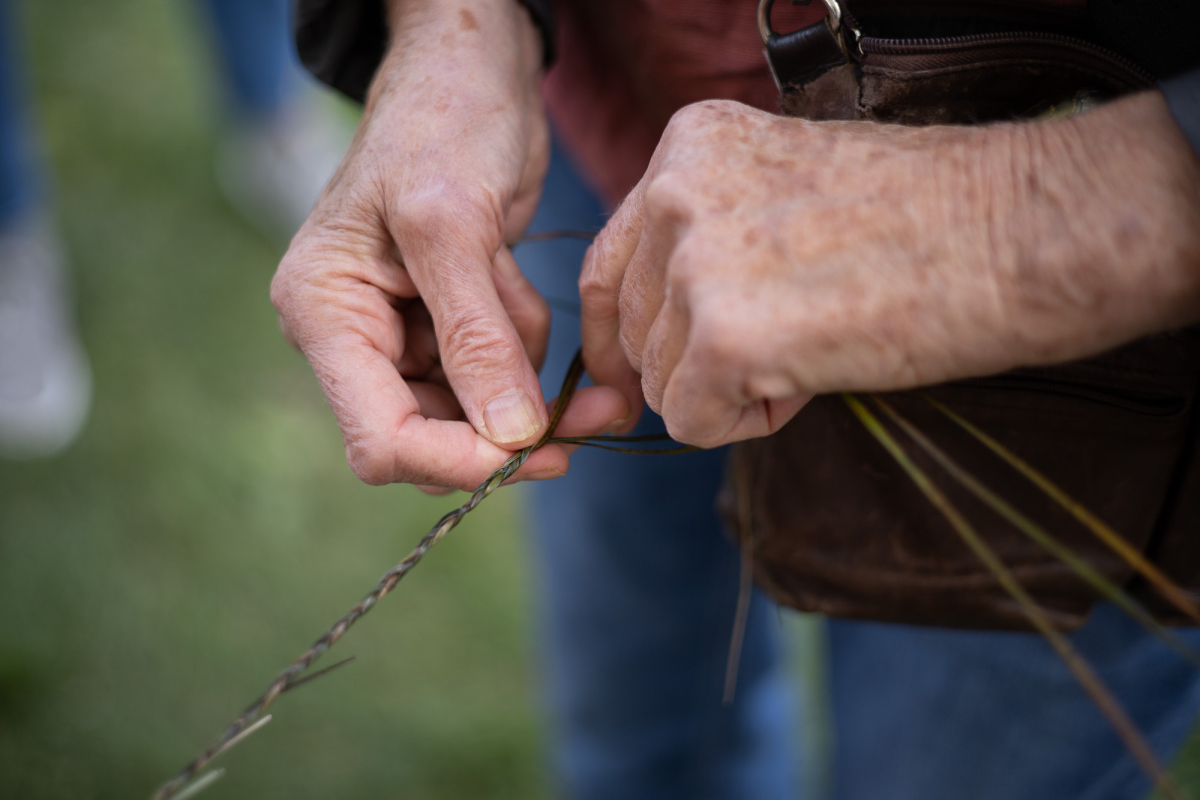
Countless survivors spoke their wisdom throughout the afternoon, including 23-year-old Bethany Stewart from the Cree Nation of Wemindji in Eeyou Istchee. Stewart was taken from her mother at three years old and is a survivor of the child welfare system.
“I grew up in a white home, away from my culture, abused all my life,” Stewart told the crowd. “And it still happens. I have so many friends who are survivors of that.”

Stewart’s mother was murdered when she was 12 years old, and she is still seeking justice.
She said Prime Minister Justin Trudeau has the power to release the documents on residential schools and ensure those responsible are held accountable, and that he has chosen not to is “a shame.”
“I don’t want to see any more of our children being taken and growing up like I did. Because I know what it was like,” she said. “He has the power to ensure that our children don’t keep getting taken away from our homes, growing up away from our culture, but he doesn’t.”
Natasha Bulowski / Local Journalism Initiative / Canada’s National Observer






Comments